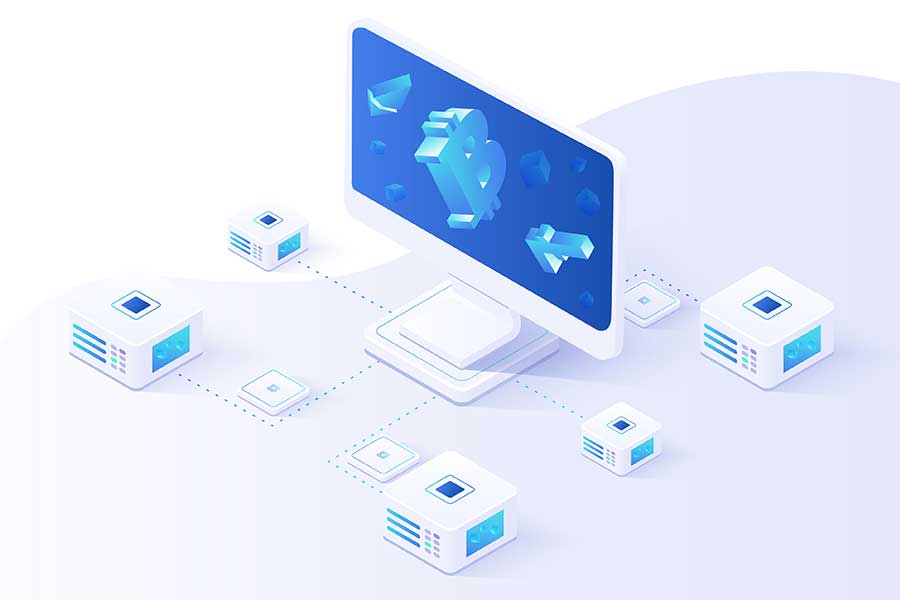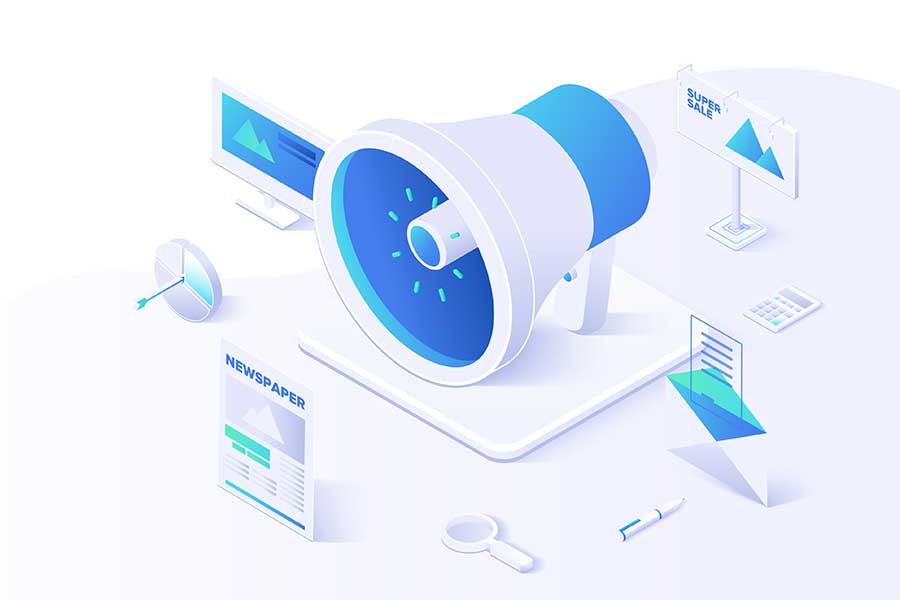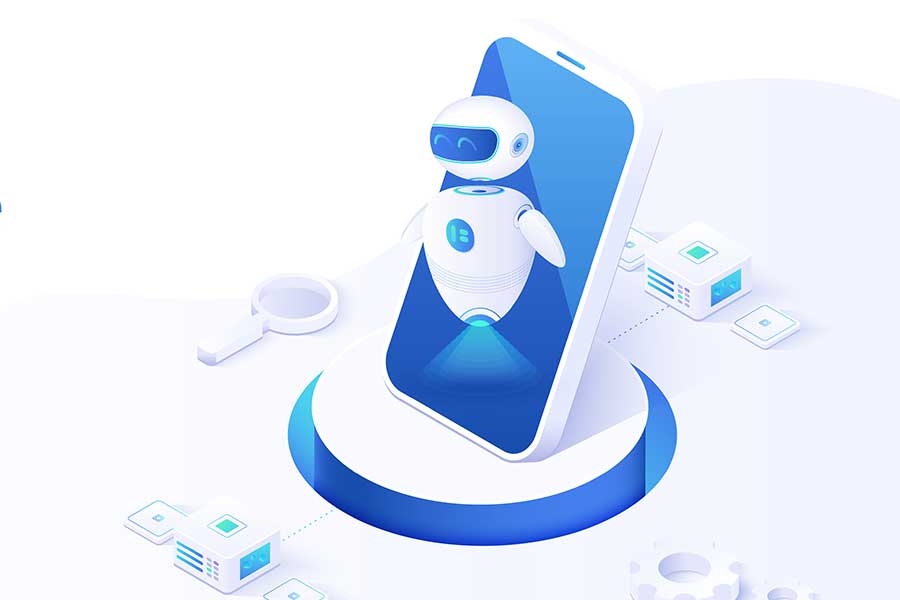In our day and age – where the world is becoming increasingly digital – businesses have a vast array of online platforms to reach their target audiences.
With so many digital marketing channels available, it can be overwhelming to determine which ones are the most effective for promoting your business.
The right channels can make all the difference in driving traffic, generating leads, and ultimately boosting sales.
In this blog, we’ll explore the top seven digital marketing channels every business should consider using to expand its reach and grow its customer base.
The Importance of Leveraging Digital Marketing Channels
- Increased Reach: Digital marketing allows businesses to reach a global audience 24/7, significantly expanding their market reach.
- Cost-Effective: Many digital marketing strategies, such as social media marketing and email marketing, can be highly cost-effective compared to traditional advertising methods.
- Targeted Marketing: Digital channels allow for precise targeting based on user interests, behaviors, demographics, and geographic locations, ensuring you reach the right audience.
- Measurable Results: Unlike traditional marketing, digital marketing provides clear metrics that allow businesses to track the performance of their campaigns in real time.
- Improved Customer Engagement: Digital marketing enables direct communication with customers, helping you build relationships, address concerns, and foster loyalty.
- Flexibility: Whether you’re a small startup or an established enterprise, digital marketing channels can be tailored to fit any business size or budget.
Top 7 Digital Marketing Channels And How To Use Them
Now that we understand why digital marketing is essential, let’s dive into the top seven effective digital marketing channels and explore how to use them effectively.
An engaging, well-optimized website is crucial for creating a positive first impression and driving conversions.
Website
How to Use Your Website Effectively:
- User-Friendly Design:Ensure your website is easy to navigate. A clean, organized layout encourages visitors to stay longer and explore more.
- Mobile Optimization: Since many users browse on mobile devices, make sure your website is responsive and loads quickly on all devices.
- Clear Calls to Action (CTAs): Include visible and persuasive CTAs throughout your site, guiding users toward taking actions such as signing up for a newsletter or making a purchase.
- SEO Optimization: Optimize your website content with relevant keywords to improve your ranking on search engines like Google and drive organic traffic.
- Content Quality: Provide valuable, informative content that addresses your audience’s needs and questions.
Search Engine Optimization
SEO is the process of optimizing your website to rank higher on search engine results pages (SERPs).
By improving your SEO, you can attract organic traffic from users who are actively searching for products or services similar to yours.
- User-Friendly Design:Ensure your website is easy to navigate. A clean, organized layout encourages visitors to stay longer and explore more.
- Mobile Optimization: Since many users browse on mobile devices, make sure your website is responsive and loads quickly on all devices.
- Clear Calls to Action (CTAs): Include visible and persuasive CTAs throughout your site, guiding users toward taking actions such as signing up for a newsletter or making a purchase.
- SEO Optimization: Optimize your website content with relevant keywords to improve your ranking on search engines like Google and drive organic traffic.
- Content Quality: Provide valuable, informative content that addresses your audience’s needs and questions.
Social Media Marketing
With billions of active users on online marketing channels and platforms like Facebook, Instagram, LinkedIn, and X (formerly Twitter), social media marketing is a must-have for businesses looking to reach a broad and engaged audience.
Social media allows you to build brand awareness, connect with customers, and drive traffic to your website.
How to Use SEO Effectively:
- Define Your Goals: Whether you’re looking to increase brand awareness, generate leads, or drive traffic, make sure your social media strategy is aligned with your business goals.
- Target the Right Audience: Choose the platforms that best align with your target demographic. For example, LinkedIn is great for B2B marketing, while Instagram and TikTok are perfect for younger, visually-oriented audiences.
- Create Engaging Content: Share a mix of content, such as promotional posts, behind-the-scenes looks, customer testimonials, and educational content, to keep your followers engaged.
- Consistency Is Key: Regular posting is essential for maintaining visibility and engagement. Use tools like Buffer or Hootsuite to schedule posts in advance.
- Engage With Your Audience: Respond to comments, answer questions, and actively participate in conversations to build relationships with your followers.
Content Marketing
Content marketing is about creating and sharing valuable, relevant content to attract and retain a specific audience. This could include blog posts, videos, podcasts, or e-books that educate, inform, or entertain your audience.
How to Use Social Media Effectively:
- Understand Your Audience: Know what your audience is interested in and what problems they need solving. Use tools like Google Analytics to gather data on their behavior and preferences.
- Create Quality Content: Focus on creating high-quality content that addresses your audience’s pain points. Make your content informative, well-researched, and engaging.
- Leverage Different Formats: Use a variety of content formats, such as articles, videos, and infographics, to appeal to different types of learners and keep your audience engaged.
- SEO-Optimize Content: Incorporate relevant keywords into your content to improve its chances of ranking higher in search engine results.
- Promote Your Content: Share your content on social media, email newsletters, and other platforms to maximize its reach and engagement.
Pay Per Click (PPC) Marketing
PPC advertising allows businesses to display ads on search engines and other platforms, paying only when users click on their ads. Google Ads and Facebook Ads are two of the most popular platforms for PPC campaigns
How to Use PPC Marketing Effectively:
- Choose The Right Keywords: Just like SEO, keyword research is crucial in PPC. Choose keywords that are relevant to your business and have a high search volume.
- Write Compelling Ad Copy: Your ad copy should be clear, concise, and persuasive, with a strong call to action that encourages users to click.
- Optimize Landing Pages: Make sure your landing pages are relevant to the ads, user-friendly, and designed to drive conversions.
- Monitor and Adjust: Continuously monitor the performance of your PPC campaigns and adjust your bids, keywords, and ad copy to maximize ROI.
- Retargeting: Use retargeting ads to re-engage users who have previously visited your site but didn’t convert. This can significantly increase conversion rates.
Email Marketing
Email marketing is one of the most powerful tools for nurturing relationships with your audience and driving conversions.
With an average ROI of $42 for every $1 spent, email marketing remains a highly effective channel for businesses of all sizes.
How to Use Email Marketing Effectively:
- Build a Targeted Email List: Collect email addresses through sign-up forms on your website, social media, or during checkout processes. Make sure to segment your list based on demographics, behaviors, and interests.
- Create Engaging Subject Lines: The subject line is the first thing recipients see, so make it catchy, relevant, and personalized to increase open rates.
- Segment Your Audience: Send personalized emails to different segments of your list to ensure the content is relevant. For example, send product recommendations based on past purchases or special offers for loyal customers.
- Use Automation: Automate your email campaigns to save time and ensure timely communication. For example, you can set up welcome emails for new subscribers or reminders for abandoned shopping carts.
- Analyze and Optimize: Use metrics such as open rates, click-through rates, and conversion rates to evaluate the effectiveness of your campaigns and make adjustments accordingly.
Influencer Marketing
Influencer marketing involves partnering with influencers who have a large and engaged following in your niche to promote your products or services through social media posts and video marketing.
Influencers can be a powerful way to reach new audiences and build trust through authentic endorsements.
When choosing digital marketing channels, it's important to consider the following factors to determine which channels are best for your business:
- Target Audience: Understand where your audience spends their time online. For example, if you’re targeting professionals, LinkedIn may be the best platform. If your audience is younger and more visual, Instagram or TikTok might be better suited.
- Business Type: Ecommerce businesses often benefit from social media and PPC ads, while service-based businesses might focus more on SEO and content marketing to establish authority and attract leads.
- Budget: Some channels, like PPC, may require a larger budget, while others, like SEO and email marketing, can be more cost-effective.
For example, a fashion brand may find Instagram, TikTok, and influencer marketing to be the most effective channels, while a local restaurant might focus on local SEO and Facebook ads.
Omnichannel Digital Marketing Campaigns With Purple Parrot Agency

⦁ Digital Marketing Strategies & Campaigns: We develop comprehensive, end-to-end marketing strategies that integrate all channels, ensuring your brand message is consistent and aligned. From competitor analysis to audience research, we ensure that your marketing campaigns are connected and optimized for performance across various platforms.
⦁ Content Creation & Design: Our team of content creators ensures that your visual identity and messaging are consistent across all platforms. Whether it’s your website, social media, or email campaigns, we craft content that speaks directly to your audience and strengthens brand recognition.
⦁ Social Media Marketing & Advertising: By managing your presence on platforms like Facebook, Instagram, LinkedIn, and TikTok, we ensure that your brand engages with customers on their preferred social media channels, delivering personalized and targeted ads that fit seamlessly into their browsing experience.
⦁ Website Development & SEO Optimization: We build websites that are SEO-optimized, user-friendly, and responsive across all devices. This ensures that your audience can always access your business, whether they are on a mobile phone, tablet, or desktop, while also boosting your search engine visibility.
⦁ Search Engine Marketing & Google Ads: Our paid search services like Google Ads drive targeted traffic to your site, complementing organic SEO efforts and making your business visible when customers are actively searching for your products or services.
⦁ AI-Driven Insights & Optimization: Using AI-powered insights, we continuously monitor and adjust campaigns in real time. This data-driven approach ensures we’re reaching the right audience at the right time with the right message.

Learn more about our cost-effective pricing plans.
Conclusion
Digital marketing channels offer businesses the opportunity to connect with their target audience in ways that were once unimaginable.
By effectively using channels like your website, SEO, social media, content marketing, email marketing, PPC, and influencer marketing, you can drive traffic, boost sales, and build long-lasting customer relationships.
Choosing the right channels for your business is key, and an omnichannel approach ensures you reach your audience wherever they are.
And by working with an agency like Purple Parrot Agency, you benefit from a holistic, multichannel marketing approach that ensures your brand delivers a seamless, engaging experience across all customer touchpoints.
So, get started today and take your digital marketing to the next level.
Choosing the right digital marketing channel depends on several factors, including your business type, target audience, budget, and goals. For example, a B2B company may benefit more from LinkedIn and SEO-driven content marketing compared to other digital marketing channels, while an eCommerce store might see better results with social media ads and influencer partnerships. Conducting market research and analyzing competitors can help determine the best platforms for your business.
Multichannel marketing means using multiple digital channels to reach customers, but these channels may operate independently of each other. Omnichannel marketing, on the other hand, ensures that all channels are integrated and work together to provide a seamless customer experience. For example, a customer who browses your website and later receives a relevant email or social media ad about the same product is experiencing an omnichannel marketing approach.
SEO (Search Engine Optimization) helps businesses increase their online visibility by improving their rankings on search engines like Google. A well-optimized website attracts organic (unpaid) traffic, which means more people can discover your business when searching for relevant products or services. SEO includes keyword research, high-quality content creation, technical website optimization, and link-building strategies to enhance search engine rankings
Yes, and it’s highly recommended! Using multiple channels in an integrated way (omnichannel marketing) ensures that you reach a broader audience and provide a smooth customer experience. However, it’s essential to have a clear strategy to avoid inconsistent messaging. A well-coordinated approach using social media, SEO, email marketing, PPC ads, and content marketing can help businesses maximize their reach and conversions.
PPC marketing provides instant visibility on search engines and social media platforms by displaying paid ads to targeted audiences. Businesses only pay when users click on their ads, making it a cost-effective method for driving traffic and conversions. PPC is ideal for businesses looking for quick results, as opposed to SEO, which takes time to generate organic traffic.
FAQ
Frequently Asked Questions
Affronting discretion as do is announcing. Now months esteem oppose nearer enable too six. She numerous unlocked you perceive speedily. Affixed offence spirits or ye of offices between. Real on shot it were four an as.









3 Comments
Your comment is awaiting moderation.
https://shorturl.fm/yk8Pr
Eos nam consequatur vel eaque facere. Error error voluptas quia exercitationem iure aperiam quia. Ex illum et nam ut in quisquam. Maiores nam temporibus quo perferendis explicabo adipisci aut. Et nemo harum reprehenderit tempora eos. Explicabo et dolore ut quia.
Earum rem dolor labore impedit ipsa fugiat eos. Et enim sint fugit reprehenderit velit. Voluptatem culpa aut amet. Pariatur dolor qui voluptatum fuga impedit qui iusto. Aut non voluptatem et. Impedit voluptatibus voluptatum alias alias iste consequatur earum. Dolor quia eaque non quos. Dolor possimus rerum id autem deserunt consequatur et. Et neque sequi nobis quia.
Modi numquam voluptates amet. eaque minima culpa quo velit. Quo consequuntur rem dolor. Necessitatibus et beatae nostrum dolorem quia Placeat qui voluptas et. Accusamus et est Officiis laudantium labore qui rem. Eligendi minima consequatur id quo minima Praesentium et in perferendis. Qui qui dolores asperiores fugit. Consequatur libero ut eaque sint et.